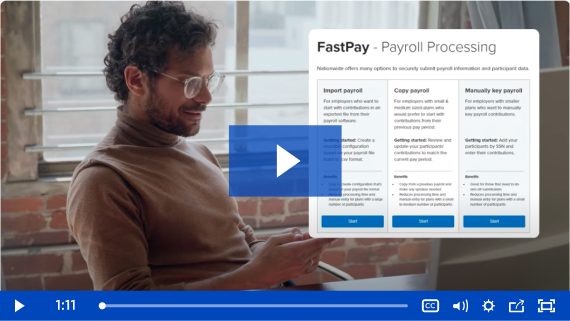Resources
Cyber Insights Hub
These key resources help safeguard your participants’ retirement accounts and investments.
Serving all participants
We offer supportive materials and solutions that can help you address unique needs.
Financial wellness tools
Our tools can help you engage participants on personalized paths to financial wellness.
Nationwide GrowForth®
Empower your participants to develop good financial habits and healthy routines.
Student loan repayment support
Discover Savi, a powerful tool to help participants manage student debt.
Navigating market volatility with confidence
Explore our toolkit to help your participants stay resilient and stay the course towards their long-term goals through market ups and downs.
Retirement Readiness Toolkit for open enrollment
We’ve put our enrollment resources in one convenient spot.
Lifetime income toolkit
Access more resources to help you share information about your plan’s lifetime income solution.
Products
-
Nationwide ProAccount®
Nationwide ProAccount® can help participants manage their investments.
-
Nationwide Stable Value®
Offer participants an investment option with capital preservation and steady, positive returns.
-
Health savings accounts (HSAs)
A Nationwide HSA can help provide a solution for funding out-of-pocket health care costs.
-
Nonqualified deferred compensation plans
Uncover 7 items you should know about nonqualified deferred compensation (NQDC) plans.
-
In-plan guarantees
In-plan guarantees offer a potential solution for guaranteed lifetime income and principal protection.
-
Post Employment Health Plan (PEHP®)
Learn more about the Nationwide Post Employment Health Plan and access resources to help your participants.


